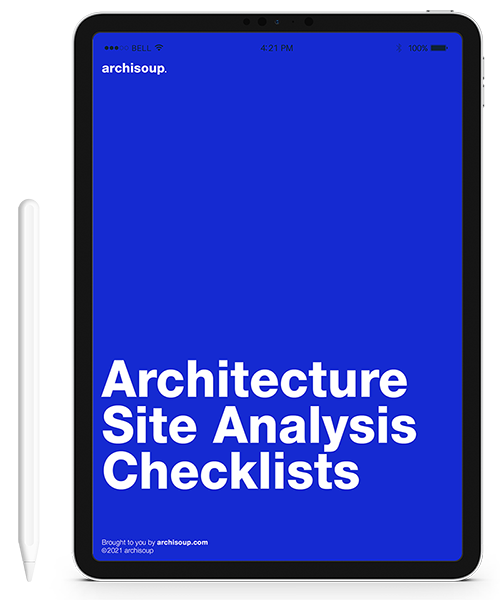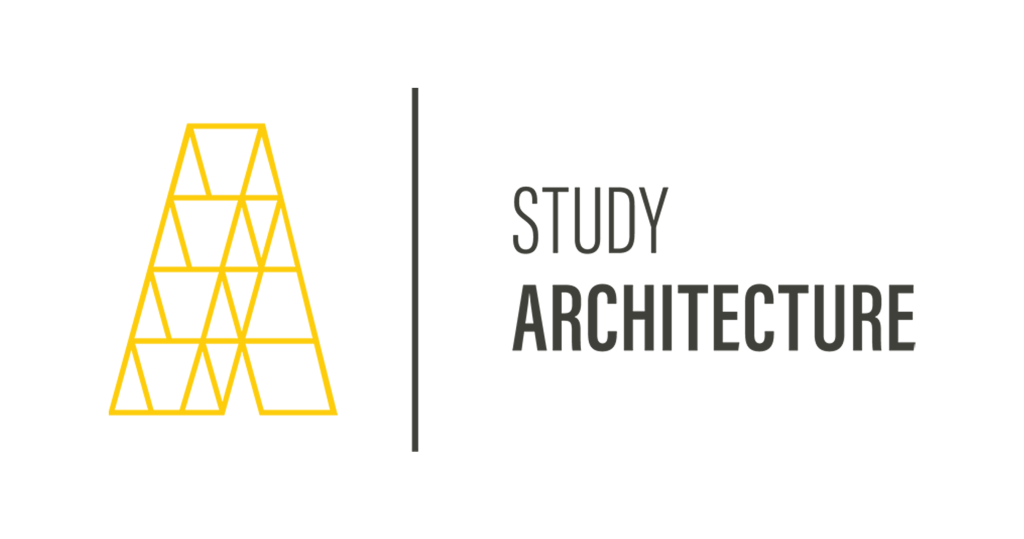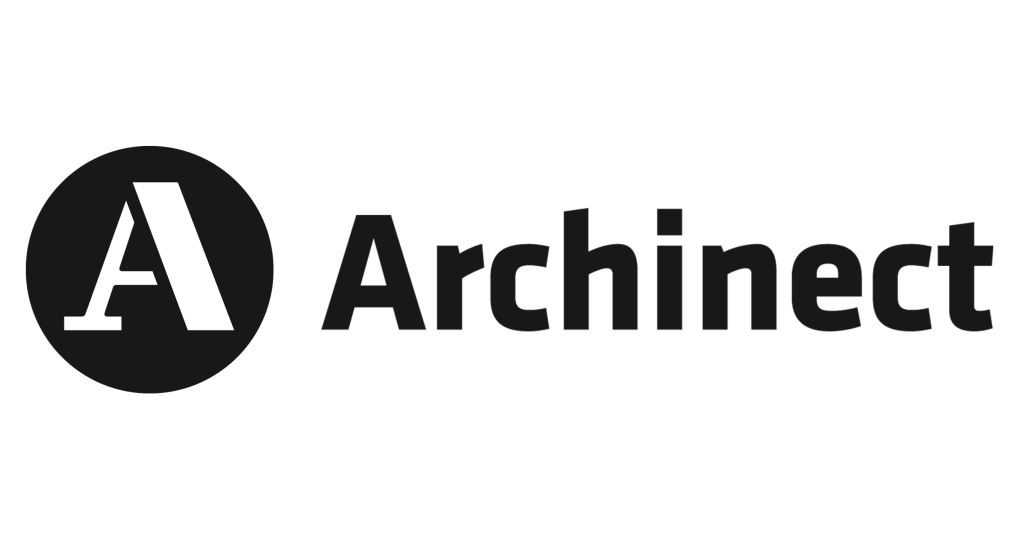Architecture detailing is not just a mere final touch; it’s the language through which design concepts and ideas are communicated and realized.
It bridges the gap between the visionary and the tangible, transforming broad strokes into the minutiae that give buildings their functionality, durability, and beauty.
However, mastering the art of architecture detailing is no small feat. It requires a deep understanding of materials, construction methods, and design principles, combined with a keen eye for aesthetics and practicality.
From the foundational knowledge of materials and construction techniques to the advanced application of digital tools and sustainable practices, here we will explore strategies to not only improve your detailing but also elevate the quality of your architectural projects.
Understanding the Basics of Architecture Detailing
Architectural detailing refers to the process of designing and specifying the junctions and connections between various elements of a building.
It encompasses the meticulous drawings and documentation that guide the construction of a project, focusing on materials, dimensions, and construction techniques.
Detailing is not merely a final touch but a critical component that ensures the functionality, durability, and aesthetic integrity of architectural work.
Good detailing solves potential building issues before they arise, facilitates efficient construction, and enhances the overall design.
Elements of Detailing
Understanding the key components involved in architecture detailing is essential for creating effective and coherent designs. These elements include:
- Joints and Connections: The points at which different materials or building components meet are crucial for structural integrity and visual coherence. Effective detailing requires understanding how to design joints that accommodate movement, manage moisture, and align with the aesthetic goals of the project.
- Materials: Each material has unique properties, such as strength, flexibility, and thermal performance, that influence how it can be used in construction. Detailing involves selecting appropriate materials for each part of the building and understanding how to combine different materials effectively.
- Interfaces: The interface between different building elements, such as the wall-to-floor junction or the window-to-wall connection, must be carefully detailed to ensure airtightness, waterproofing, and thermal insulation. Proper detailing at interfaces prevents common building issues like leaks, drafts, and thermal bridges.
Detailing is both an art and a science, requiring architects to apply technical knowledge creatively to solve complex design challenges.
By focusing on the junctions and connections that bring a design together, architects can create buildings that are not only structurally sound but also expressively detailed.

Foundational Skills and Knowledge
Mastering architecture detailing requires a solid foundation in several key areas. Here, we’ll explore the essential skills and knowledge that form the bedrock of effective detailing, from technical prowess to a deep understanding of materials and construction techniques.
Technical Skills
Architecture detailing is underpinned by a set of technical skills that enable the architect to convey design ideas clearly and accurately. These skills include:
- Drafting: Whether by hand or using computer-aided design (CAD) software, drafting skills are essential for creating detailed drawings that communicate the specifics of a design to contractors and builders.
- 3D Modeling: Tools like BIM (Building Information Modeling) software go beyond traditional drafting by allowing architects to create detailed 3D models of buildings. These models can help in visualizing how different elements come together and in identifying potential issues before construction begins.
- Precision and Accuracy: Detailing demands a high level of precision and attention to detail. Every line in a drawing or model represents physical materials and their interaction, requiring exact measurements and specifications.
Material Knowledge
An architect’s choice of materials significantly impacts both the aesthetics and functionality of a building. Understanding the properties of various materials is crucial for effective detailing:
- Strength and Durability: Knowing the load-bearing capabilities and longevity of materials helps in selecting the right ones for structural and non-structural elements.
- Thermal and Acoustic Properties: Materials play a key role in a building’s thermal efficiency and sound insulation. Architects need to choose materials that meet the project’s requirements for energy efficiency and noise control.
- Sustainability: With a growing emphasis on green building practices, architects must be versed in selecting materials that are environmentally friendly, recyclable, and energy-efficient.
Construction Techniques
A thorough understanding of construction techniques is vital for creating details that are not only aesthetically pleasing but also practical and buildable. This knowledge includes:
- Foundations and Framing: Knowing how buildings are supported and structured helps in designing details that integrate seamlessly with the building’s skeleton.
- Joinery and Connections: The way different materials and elements are joined together affects the durability and functionality of the detail. Architects should be familiar with various techniques for connecting materials like wood, steel, and concrete.
- Waterproofing and Insulation: Proper detailing must ensure that buildings are protected from water ingress and are well insulated against heat and cold. This involves understanding the principles of barrier systems, drainage, and thermal bridging.
Building a strong foundation in these areas equips architects with the tools they need to create detailed designs that are not only visionary but also practical and sustainable.
By continuously developing their technical skills, deepening their material knowledge, and staying updated on construction techniques, architects can improve their detailing capabilities and contribute to the creation of buildings that stand the test of time.
Strategies for Improvement
Improving architecture detailing requires a blend of theoretical knowledge, practical skills, and continuous learning.
This section outlines strategies to enhance your detailing abilities, making your designs not only aesthetically pleasing but also structurally sound and functionally efficient.
Continuous Learning
- Stay Updated: The field of architecture is constantly evolving, with new materials, technologies, and methodologies emerging. Subscribe to industry journals, attend webinars, and participate in workshops and conferences to stay informed.
- Online Courses and Certifications: Many platforms offer courses ranging from basic drafting techniques to advanced construction detailing. These can be a flexible way to gain new skills or deepen existing ones.
- Professional Development: Engage in professional development opportunities offered by architectural associations and institutions. These can provide both theoretical knowledge and practical insights.
Practice and Experimentation
- Sketch Regularly: Develop a habit of sketching construction details. This can improve your understanding and help you think through the construction process.
- Use Real Projects as Practice Grounds: Apply new detailing techniques in your projects. Start with less critical applications to test and refine your approach.
- Prototype and Model: Build physical or digital models of your details. This hands-on practice can reveal practical challenges and potential improvements.

Feedback and Critique
- Peer Review: Regularly review your details with peers or colleagues. Fresh eyes can spot issues or offer new solutions you might not have considered.
- Mentorship: Find a mentor experienced in architecture detailing. Their guidance can accelerate your learning and help you navigate complex detailing challenges.
- Client and Contractor Feedback: Engage with clients and contractors during and after the construction process. Their insights can inform how your details perform in real-world conditions and how they could be optimized.
Incorporating Feedback into Practice
- Iterative Design Process: Treat each project as an opportunity to learn and improve. Incorporate feedback into your future designs to continuously enhance the quality of your detailing.
- Documentation and Reflection: Keep a detailed journal or digital portfolio of your detailing work, including notes on what worked, what didn’t, and how you incorporated feedback. Reflect on your progress and set goals for further improvement.
Detailing is both an art and a science, requiring a deep understanding of materials, construction processes, and design principles.
By engaging in continuous learning, practicing and experimenting with new ideas, and seeking out feedback, you can significantly improve your architectural detailing.
This not only elevates the quality of your projects but also enhances your value as a professional in the field of architecture.
Advanced Detailing Techniques and Tools
In the pursuit of architectural excellence, mastering advanced techniques and integrating the latest tools are essential steps for enhancing detailing in your designs.
Digital Tools and Software
The evolution of digital tools has transformed architecture detailing, offering unprecedented precision and efficiency. Here are key technologies shaping the future of detailing:
- CAD (Computer-Aided Design): Software like AutoCAD and SketchUp facilitate the creation of detailed drawings and models with high accuracy. Mastering CAD allows architects to experiment with complex details more freely.
- BIM (Building Information Modeling): Platforms such as Revit and ArchiCAD go beyond traditional CAD by integrating detailed information into the model, allowing for a holistic view of the building’s performance. BIM’s collaborative tools enhance coordination between architects, engineers, and contractors, ensuring that details are feasible and aligned with the project’s overall goals.
- Parametric Design Tools: Software like Rhino with Grasshopper enables architects to explore parametric and computational designs, where details can be algorithmically generated. This approach is especially useful for custom, innovative detailing in complex forms and structures.
Sustainable and Innovative Materials
Incorporating sustainable and innovative materials into your detailing can significantly impact both the environmental footprint and aesthetic of a building. Consider the following:
- Recycled and Bio-based Materials: From recycled steel to bio-based insulation, using sustainable materials in your details not only reduces environmental impact but can also contribute to a building’s narrative.
- Smart Materials: Materials that adapt to environmental conditions, such as phase-changing materials for insulation or self-healing concrete, offer new possibilities for functional and dynamic architectural details.
- Composite Materials: The use of composites, such as fiber-reinforced polymers, can lead to lighter, stronger, and more flexible architectural elements, allowing for innovative detailing that challenges traditional construction methods.
Custom Solutions
Creating custom details can significantly enhance the character and functionality of a building. Here’s how to approach custom detailing:
- Contextual Design: Custom details should respond to the specific context of a project, including environmental conditions, cultural significance, and user needs. This approach ensures that each detail contributes meaningfully to the project as a whole.
- Collaboration with Fabricators and Artisans: Working closely with craftsmen and fabricators can bring unique detailing ideas to life. This collaboration can result in innovative solutions that reflect a high level of craftsmanship and attention to detail.
- Prototyping and Testing: Before finalizing a custom detail, prototyping and testing are crucial. These processes help identify potential issues and ensure that the detail will perform as intended, both aesthetically and functionally.
The mastery of advanced detailing techniques and tools is a journey that requires curiosity, experimentation, and continuous learning.
By embracing digital innovations, exploring sustainable materials, and developing custom solutions, architects can push the boundaries of what is possible in architectural detailing.
These advanced approaches not only enhance the quality and precision of architectural designs but also contribute to more sustainable, functional, and meaningful buildings.

Real-World Application
In the journey to mastering architecture detailing, theoretical knowledge and software skills form the foundation. However, the real test and true enhancement of these skills occur through their application in real-world scenarios.
Learning from Exemplary Projects
Case studies of projects known for their exceptional architectural detailing provide invaluable learning opportunities. These analyses should focus on:
- Detailing Philosophy: Understanding the architectural vision behind the details and how they contribute to the overall aesthetic and functionality of the building.
- Material Selection and Application: Examining the choice of materials for specific details and the rationale behind these choices.
- Construction Techniques: Delving into the construction methods used to achieve the detailing, including any innovative techniques or challenges overcome during the process.
- Lessons Learned: Identifying the successes and setbacks in the detailing process, providing a realistic view of the complexities involved.
Case studies not only inspire but also offer practical insights that can be adapted or avoided in future projects.
Site Visits and Practical Experience
While case studies provide a third-person perspective on architecture detailing, nothing compares to firsthand experience. Site visits are crucial for several reasons:
- Observation of Construction Processes: Seeing how details are executed on the ground helps bridge the gap between design and construction, revealing the practical challenges and solutions.
- Understanding Material Behavior: Witnessing how materials are handled and respond to environmental conditions provides a deeper understanding of their suitability for different applications.
- Sequence of Assembly: Learning the order in which components are assembled can influence the design of details to facilitate easier and more efficient construction.
- Engagement with Construction Professionals: Direct interaction with builders, contractors, and craftspeople offers insights into the feasibility of designs and potential improvements.
Encourage proactive organization or participation in site visits, whether through academic programs, professional work environments, or industry associations.
Collaboration with Industry Professionals
The complexity of architectural detailing often requires expertise beyond the architectural domain. Collaboration with a range of industry professionals enhances detailing in several ways:
- Structural Engineers: Their input ensures that details are not only aesthetically pleasing but also structurally sound. They can offer alternatives that optimize structural performance without compromising design intent.
- Construction Managers and Contractors: These professionals provide practical perspectives on construction feasibility, cost implications, and timeframes. Their early involvement can lead to more efficient and constructible details.
- Material Specialists: Manufacturers and material specialists can advise on the properties, limitations, and innovative uses of materials, leading to more informed and creative detailing solutions.
- Sustainability Consultants: With an increasing focus on green building practices, these consultants can help integrate sustainable principles into detailing, enhancing the environmental performance of projects.
Improving architecture detailing requires a balance of education, practice, and collaboration.
By studying exemplary projects, engaging directly with the construction process, and working closely with a diverse team of professionals, architects and designers can elevate their detailing skills.
These real-world experiences not only enhance technical abilities but also foster a deeper appreciation for the tangible impact of well-executed details on the quality and success of architectural projects.

Resources for Further Learning
This journey ongoing, and the landscape of architecture is constantly evolving with new materials, technologies, and design philosophies.
To stay abreast of these changes and continuously improve your detailing skills, it’s crucial to engage with a variety of resources.
Here, we outline some essential books, online resources, and professional associations that can serve as valuable tools for further learning and inspiration.
Books and Publications
- “Architectural Detailing: Function, Constructibility, Aesthetics” by Edward Allen and Patrick Rand: A comprehensive guide that focuses on the principles of how to design details that are functional, buildable, and aesthetically pleasing.
- “Detail in Contemporary Residential Architecture” by David Phillips and Megumi Yamashita: Provides analysis of detailing in modern residential architecture, featuring detailed drawings and design descriptions.
- “Manual of Section” by Paul Lewis, Marc Tsurumaki, and David J. Lewis: Explores the role of sections in architecture, offering a unique insight into the intersection of space, structure, and materials.
Online Resources
- ArchDaily: Offers a vast collection of architectural projects with detailed drawings and descriptions, focusing on construction details.
- DETAIL Online: A platform dedicated to the presentation of projects with a particular emphasis on construction details and technical solutions.
- The Building Enclosure: Provides in-depth articles, case studies, and technical resources on the design and construction of modern building envelopes.
Professional Associations and Networks
- The American Institute of Architects (AIA): Offers resources, education, and networking opportunities for professionals in architecture, including seminars and workshops on architecture detailing.
- Royal Institute of British Architects (RIBA): Provides a wealth of resources including access to the RIBA Library, talks, and continuing professional development (CPD) opportunities focused on design and detailing.
- International Union of Architects (UIA): Facilitates international exchange and education in architecture, offering conferences, competitions, and workshops that can enhance understanding of global practices in detailing.
Engaging with the Community
Beyond these resources, engaging with the architectural community through forums, social media groups, and architecture blogs can provide practical advice, inspiration, and support from peers and experts alike.
Platforms such as LinkedIn, Reddit’s architecture communities, and Instagram offer spaces to share work, ask for feedback, and discover innovative detailing solutions from around the world.
Conferences and Workshops
Attending architecture conferences, workshops, and seminars is another excellent way to deepen your knowledge of architectural detailing.
These events not only provide learning opportunities from leading experts but also facilitate networking with peers who share similar interests and challenges.
Continuous Practice and Reflection
Remember, the key to improvement in architecture detailing lies in the continuous practice and reflection on your work.
Utilize the resources mentioned to inspire and inform your designs, but also take the time to critically assess your own work, learn from each project, and be open to exploring new and innovative detailing solutions.
By integrating these resources into your learning process, you can expand your knowledge base, stay updated with the latest trends and technologies, and ultimately enhance the quality and creativity of your architectural detailing.

Conclusion
Architecture detailing is not just a requirement of the construction process; it’s an art that embodies the precision, care, and creativity of the architect.
Throughout this article, we’ve explored various facets of architectural detailing, from the foundational skills and knowledge necessary to excel in this area to advanced techniques and tools that can elevate your work from good to exceptional.
We’ve discussed the importance of continuous learning, the value of hands-on experience, and the benefits of engaging with the broader architectural and construction community.
Improving your architectural detailing skills is a journey of ongoing education and practice.
It requires a keen eye for materials, an understanding of construction techniques, and an inventive mind that can see beyond the conventional to the potential of what could be.
Each detail you design is a reflection of your understanding of these principles and an opportunity to contribute to the built environment in a meaningful way.
As you move forward, take the insights and strategies shared in this article as starting points. Challenge yourself to apply at least one new concept or technique in your next project.
Experiment with materials, engage with software tools, seek feedback from peers and mentors, and most importantly, visit construction sites to see the reality of how details come together.
Remember, the beauty of architecture lies not only in its grand visions but in the meticulous details that bring those visions to life.
Whether it’s the way natural light dances across a room, the seamless integration of a building with its landscape, or the innovative use of materials to achieve both form and function, it’s the details that make an architectural work truly resonate.
We encourage you to approach each project as an opportunity to innovate and express your unique architectural vision through the details. Let your work not only stand as a testament to your technical skills but also as a contribution to the architectural legacy that inspires future generations.
In closing, architecture detailing is a discipline of continuous improvement and exploration. Keep pushing the boundaries, stay curious, and let your detailing work be a hallmark of excellence in the architectural community.














